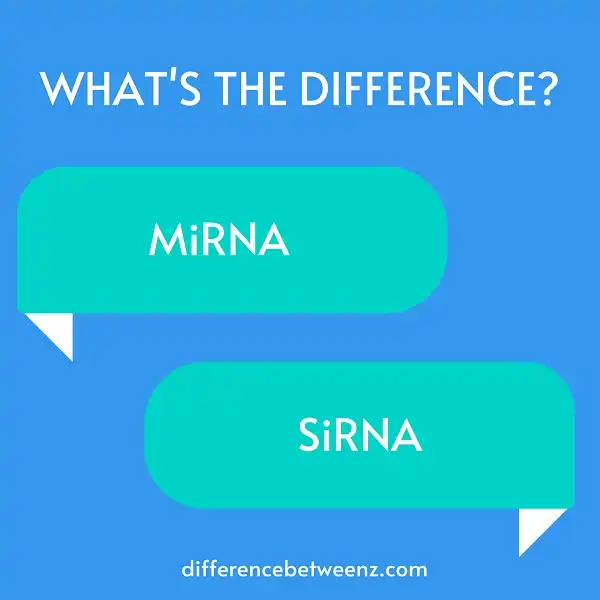Although both MiRNA and SiRNA play important roles in gene regulation, there are some distinct differences between the two. In this post, we’ll take a closer look at what these differences are, and how they can impact gene expression. We’ll also discuss some of the advantages and disadvantages of using each type of RNA for gene regulation. By understanding the pros and cons of MiRNA vs SiRNA, you can make an informed decision about which one is right for your research needs.
What is MiRNA?
MiRNA (microRNA) is a short single-stranded RNA molecule that functions in RNA silencing and post-transcriptional regulation of gene expression. MiRNAs are abundant in plants, animals, and many viruses. In plants, miRNAs play important roles in development, stress response, and metabolism. In animals, miRNAs are involved in a wide range of biological processes such as cell proliferation, development, metabolism, and cancer. MiRNAs are also found in viruses, where they can silence host genes and modulate viral replication. MiRNAs typically bind to the 3′ UTR (untranslated region) of target mRNAs and inhibit protein translation or degrade the mRNA.
MiRNAs are transcribed from RNA polymerase II promoter-associated genes by RNase III enzymes that cleave dsRNA (double-stranded RNA) into small RNAs. These small RNAs are then loaded into RISC (RNA-induced silencing complex), which mediates target mRNA cleavage or translational repression. MiRNAs have been shown to be involved in a variety of human diseases, including cancer, diabetes, and Alzheimer’s disease. MiRNA-based therapeutics is an emerging area of medicine with the potential to treat a variety of diseases.
What is SiRNA?
SiRNA is a type of RNA that plays a role in gene silencing. SiRNA specifically binds to mRNA and prevents it from being translated into protein. This SiRNA-mediated gene silencing is an important mechanism for regulating gene expression. SiRNAs are typically 21-23 nucleotides in length and are composed of two complementary strands. When these strands bind to mRNA, they induce cleavage of the mRNA molecule. This cleavage prevents the mRNA from being translated into protein. SiRNA-mediated gene silencing is a powerful tool for studying gene function and has been used to investigate a wide range of biological processes. SiRNAs have also shown great promise as therapeutic agents. SiRNA-based drugs are currently being developed to treat a variety of diseases, including cancer, viral infections, and metabolic disorders.
Difference between MiRNA and SiRNA
MiRNA and SiRNA are two types of RNA that are involved in gene silencing. MiRNA is a single-stranded RNA molecule that is typically 20-25 nucleotides in length. MiRNAs bind to complementary sequences in mRNA molecules, resulting in the degradation of the target mRNA or the repression of its translation. In contrast, SiRNA is a double-stranded RNA molecule that is typically 19-23 nucleotides in length. SiRNAs bind to complementary sequences in mRNA molecules and trigger the cleavage of the target mRNA. As a result, SiRNAs are more effective than MiRNAs at preventing the expression of a gene. However, MiRNAs have a greater variety of targets, making them more versatile than SiRNAs.
Conclusion
In conclusion, miRNAs and siRNAs are both important regulators of gene expression. However, there are some key differences between them that you should be aware of when choosing a tool for your research needs. miRNAs are generally smaller in size and can regulate more than one gene at a time, while siRNAs are larger and can only regulate a single gene. Additionally, siRNAs tend to be more stable in vitro and in vivo.


